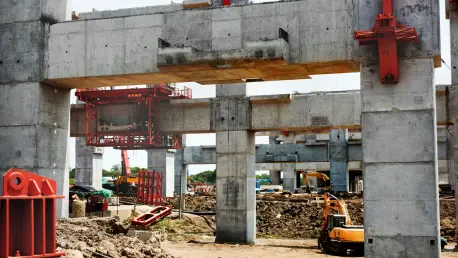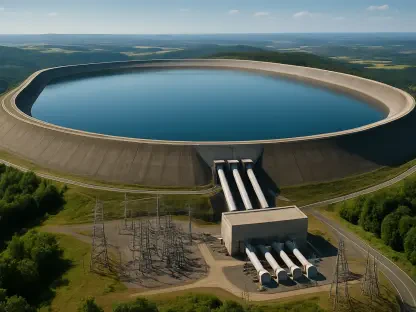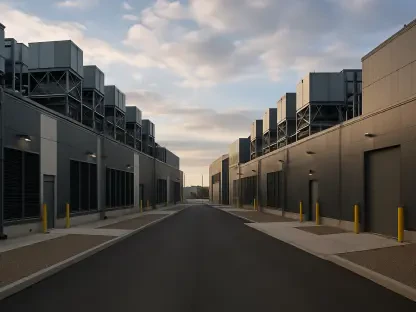In a small town in West Virginia, the proposal for the Ridgeline project has sparked significant debate among local residents, environmental advocates, and policymakers, drawing attention to the complexities of balancing economic growth with environmental protection. Situated in Thomas, the proposed power plant aims to contribute to energy demands while ensuring minimal impact on the surrounding environment, a commitment met with skepticism by many community members. Public discussions, notably at Canaan Valley State Park, have centered around environmental permits, particularly air quality concerns, highlighting a broader examination of potential pollutants and their implications for public health. The project emblemizes a microcosm of nationwide dialogues, where development prospects frequently clash with the urgency of ecological responsibility.
Project Proposal and Community Concerns
The Ridgeline project has been presented as a solution to burgeoning energy needs, potentially bringing economic benefits through jobs and infrastructure development. Yet, this prospect is overshadowed by apprehension over environmental ramifications, especially concerning air quality. Locals express fears that the proposed plant might introduce harmful pollutants detrimental to the region’s unique ecosystems. Among the crux of the matter is disbursement testing for air pollutants, an exigency not assumed essential for what is classified as a minor source permit. Despite assurances from the Air Quality Division that the plant meets regulatory standards, the region’s specific environmental characteristics—such as susceptibility to weather inversions complicating pollutant dispersion—pose undeniable challenges, fueling community calls for more rigorous assessments.
Health professionals and concerned citizens have advocated for independent disbursement testing to address potential health hazards, underscoring the vitality of transparency above procedural compliance. Without this, the project remains a contentious topic, stirring debates about the reliability of regulatory frameworks and their adaptability to environmental idiosyncrasies. As locals lobby for adjustments in testing requisites, the conversation reveals a profound need for policies capable of accommodating site-specific scenarios to ensure environmental integrity without compromising development prospects.
Regulatory Framework and Environmental Implications
The regulatory landscape surrounding the Ridgeline project amplifies the tension between standardized environmental permits and the demand for exceptional scrutiny given unique regional attributes. At the heart of community unrest is the project’s regulatory compliance—highlighted during public meetings—affirmed by officials yet challenged by residents wary of pollutant impacts on health. As air quality divisions outlined their protocols, explaining delineations between minor and major source emissions, discussions pivoted on pollutants like carbon monoxide and sulfur dioxide, with assurances of state adherence being met with doubt. The interplay between procedural norms and real-time environmental assessments remains a friction point, as residents argue for reconsiderations premised on site-specific conditions.
Moreover, the project’s consideration of diesel as a backup fuel has added layers to discussions concerning emissions. Panels attempted to quell tensions by framing its usage strictly for emergencies, yet concerns linger over its ecological profile through potential degradation over time. Operational specifics and their implications on community well-being are pivotal in shaping comprehensive permit reviews, urging policymakers to decode legislative technicalities against overarching environmental objectives. Notably, House Bill 2014—limiting local government influence over specific developments—adds complexity to local calls for regulatory adaptability, provoking discourse on reconciling state-driven agendas with grassroots environmental advocacy.
Implications and Broader Societal Concerns
Beyond regulatory analysis, the Ridgeline project echoes broader societal apprehensions about infrastructural endeavors evolving into unforeseen ecological burdens. Public meetings revealed undercurrents of mistrust regarding the project’s motivations, with residents opining possible ties to data centers. Casey Chapman’s acknowledgment of data center plans stoked fears over energy microgrid establishment, projecting a narrative where seemingly benign energy projects oscillate into multifaceted developments demanding critical scrutiny. This speculation is framed against legislative directives perceived to limit local governance power, underscoring potential societal impacts extending to property values and localized energy policies.
The project thus serves as a confluence of economic, environmental, and legislative threads, warranting measured evaluations to foster balanced growth harmonizing technological expansion with ecological and public health safeguards. Discourse reveals the imperative for transparent developments to cultivate trust among stakeholders, bridging disconnects between regulatory intentions and community perceptions. A comprehensive examination elucidates concerns beyond pollutant emission into dimensions of infrastructural intentions and their ripple effects upon community integrity and environmental statutes.
Conclusion: Navigating Development with Sustainability
The Ridgeline project, pitched as a solution to growing energy demands, promises economic benefits such as job creation and infrastructure enhancement. However, potential environmental consequences, particularly regarding air quality, have sparked significant concern. Local residents worry that the proposed facility might emit pollutants harmful to the region’s unique ecosystems. Central to the issue is disbursement testing for air pollutants, which is deemed unnecessary since the plant is categorized under a minor source permit. Despite assurances from the Air Quality Division that the plant complies with regulations, the area’s distinct environmental conditions—including vulnerability to weather inversions that could hinder pollutant dispersion—are undeniable challenges. This has led the community to demand more thorough assessments. Health professionals and concerned citizens advocate for independent disbursement testing, emphasizing the importance of transparency over mere procedural adherence. The debate highlights deficiencies in current regulatory frameworks, revealing the need for policies that address site-specific environmental challenges while ensuring development benefits.









